About
Biography
My name is Fred, and I’ve been passionate about basses and guitars since I was a child. At the age of 15, I left the traditional school system to fully dedicate myself to my true calling: Lutherie. Since my curiosity has only deepened, driving me to constantly explore new ideas in pursuit of modern, ergonomic, and innovative instruments.
The name Meta evokes the notions of “after” or “beyond”, and when combined with other words, meta often signifies “change” or “alteration”. It is with this concept in mind that I have pursued and developed my creative and artistic passion of making beautiful, unique, modern and innovative basses and guitars.
As a luthier and a lifelong music enthusiast, I place sound quality and ergonomics at the core of my work. Each instrument is designed to become a true extension of the musician, adapting to their needs and enhancing their artistic expression.
Every piece I build is handmade, using only the finest woods, top-tier components, and premium hardware. The result is a refined, ergonomic design, tailored for the most discerning musicians.
From the initial piece of wood to the final instrument, the concept of transformation always guides me creatively. Throughout my process, I endeavour to express abstract concepts through shapes, materials and colors.
I love creating fine pieces suiting each musician’s requirement. The dynamic and slender shapes, the feeling of a unique object, and the comfort of the instrument are the key elements in every creation. Every model can be customized and carefully tailored to meet the artist’s needs.
Meta is an entire transformative process, a kind of alchemy.
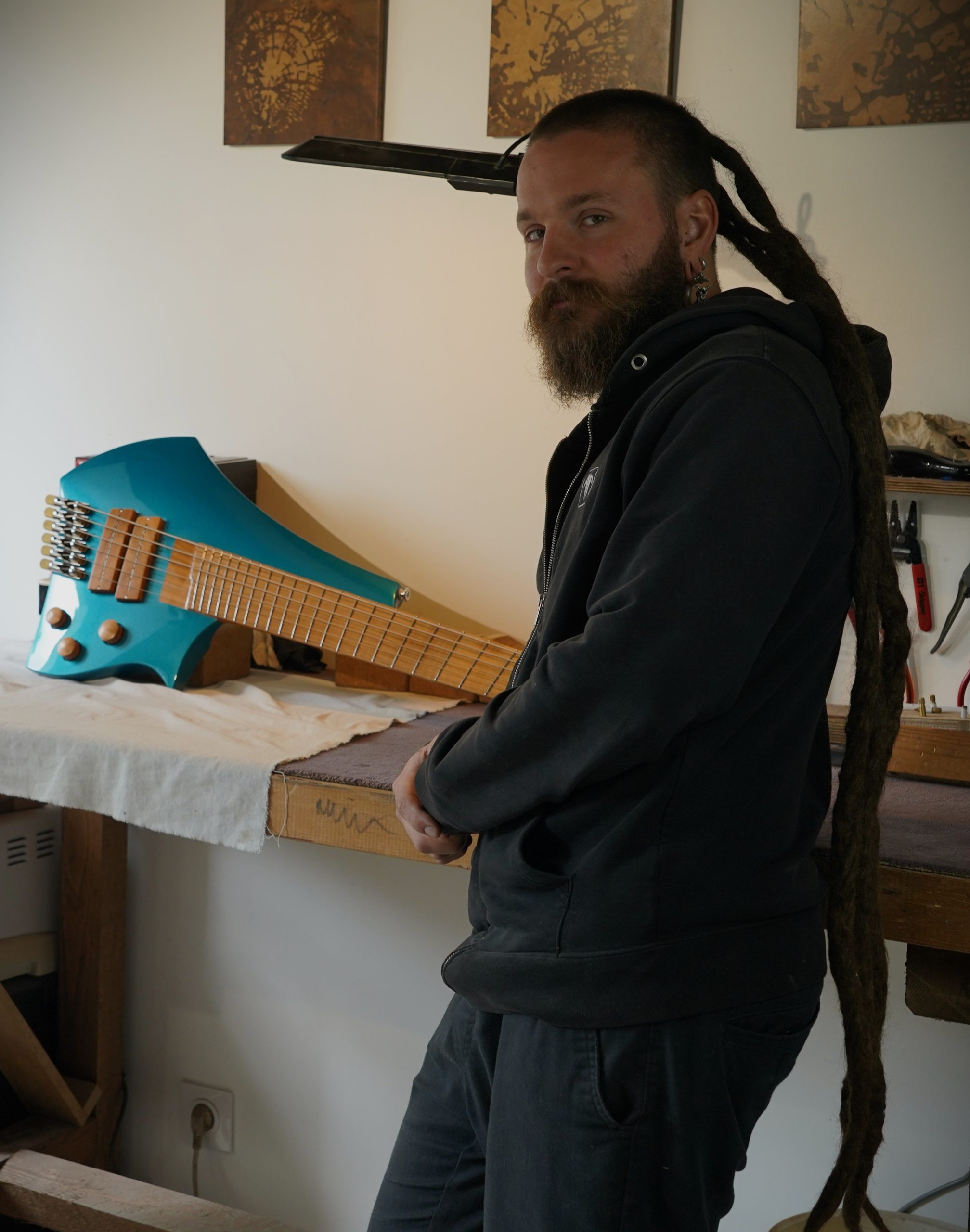
Proprietary Hardware
Custom saddles for uncompromising quality
For a long time, I searched for the right headless bridge, something that truly fit my instruments, both in form and function.
I tried everything I could find, hoping one would feel just right. But nothing quite clicked.
So I decided to design my own.
It was the beginning of a long journey : two years of research, trial and error, and countless adjustments. I wasn’t aiming to reinvent anything grand. I just wanted something that worked the way I felt it should: simple, reliable, and in harmony with the instruments I build.
Today, that bridge is real and I’m quietly proud to share it.
Why this bridge?
- Improved resonance — the right choice of materials delivers a clear, focused tone.
- Smooth tuning – easy, stable, intuitive adjustments
- Quick setup – straightforward installation, no fuss
- One-key system – simple and efficient
- Lightweight – comfortable without compromise
- Refined design – clean lines with purpose behind them
- Custom options – adaptable to fit your vision
This bridge wasn’t designed to impress — it was designed to serve.
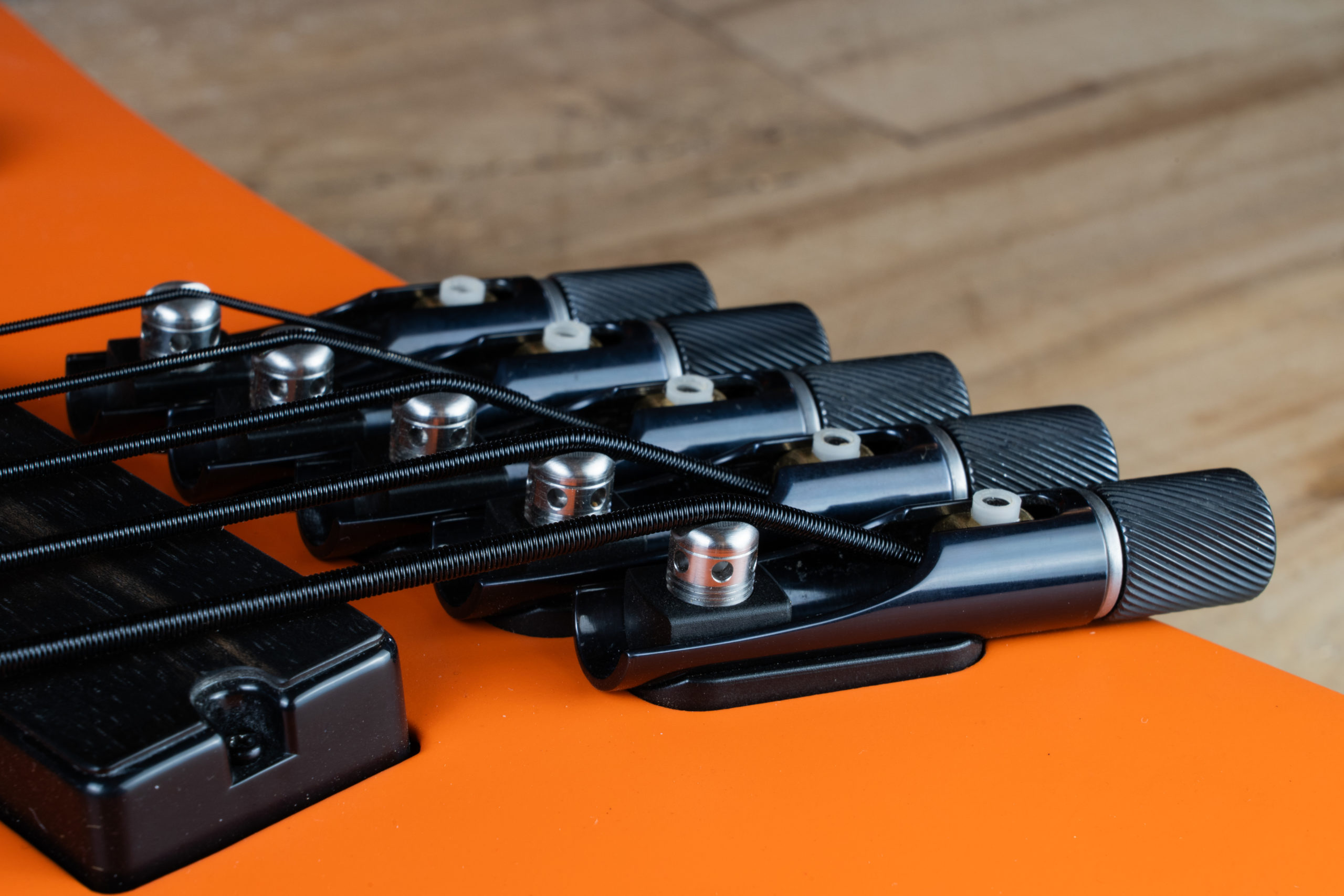
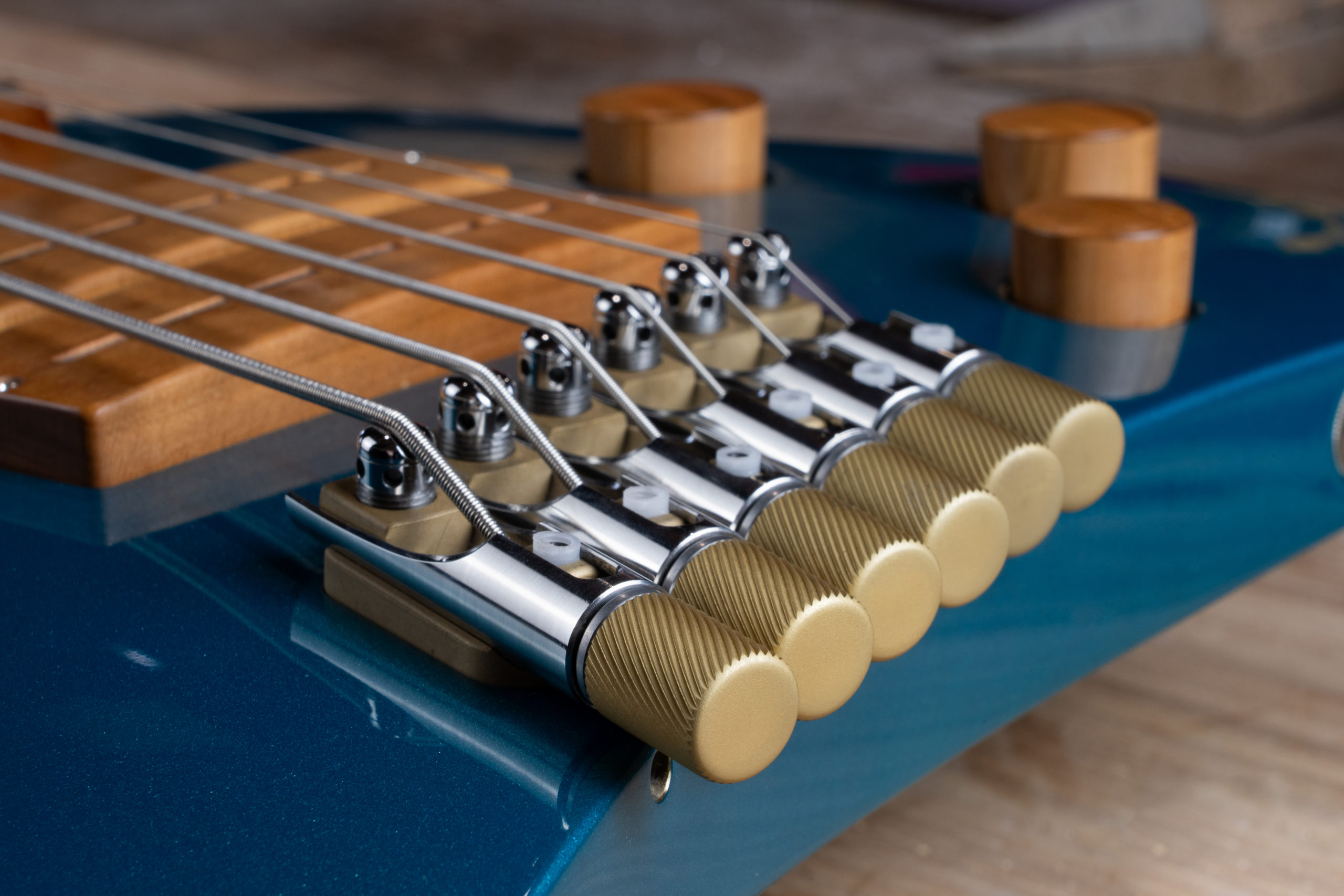
Headless design
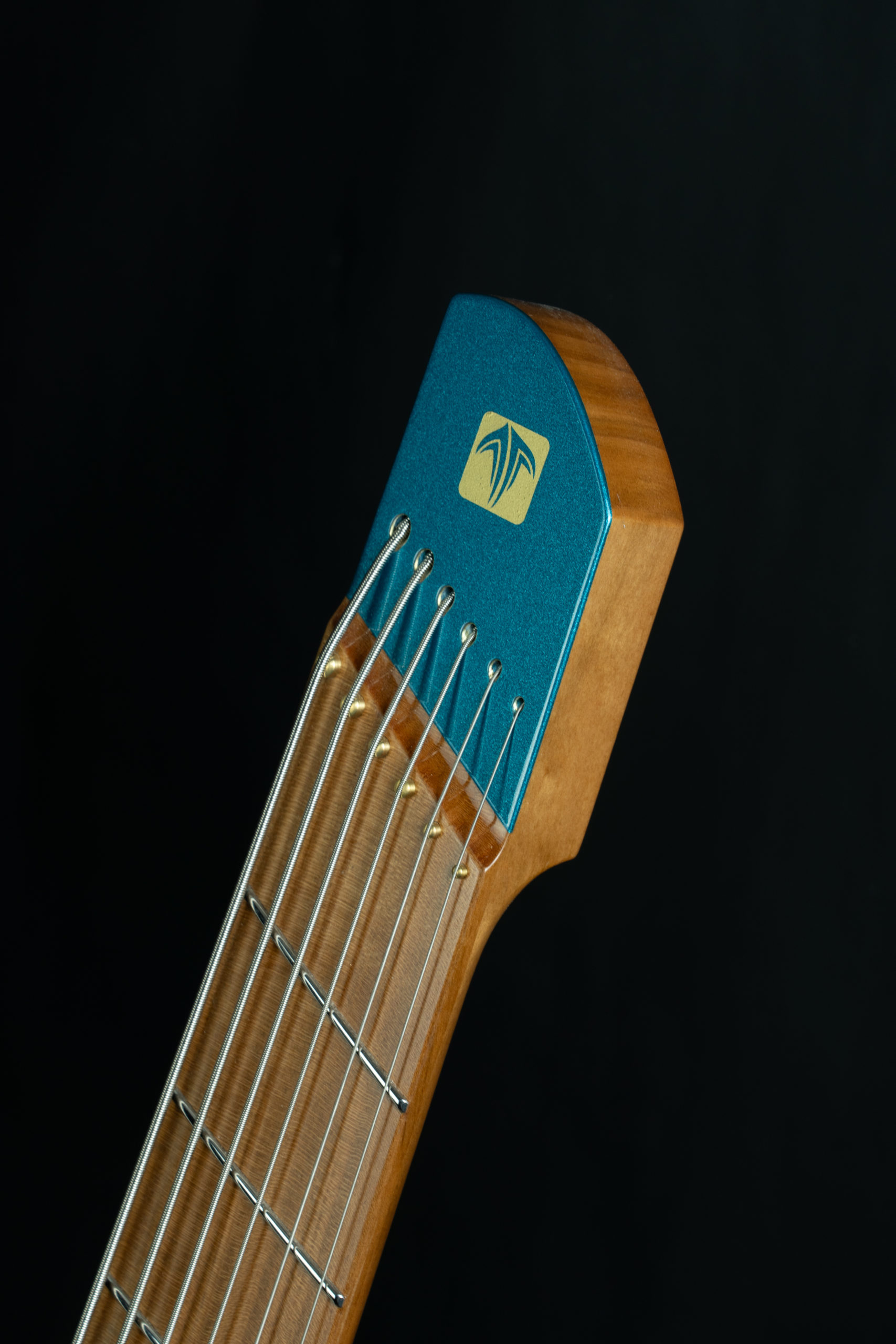
Unique design
This innovative headstock design redefines functionality and aesthetics in headless bass construction. It features a string-through configuration, for enhanced resonance and sustain. A key highlight is the invisible cap, which provides discreet and tool-free access for quick string changes. When closed, the cap integrates seamlessly into the design, maintaining a clean, minimal appearance. This solution combines modern design with practical utility, offering both professional reliability and a streamlined user experience.
Lightweight & Compact Design
By removing the headstock and machine heads, the instrument becomes lighter and more compact, greatly improving balance and overall ergonomics. No more “neck dive.”This makes it easier to play on stage, travel with, and handle in tight spaces. Plus, without a headstock, there’s less risk of damage if the instrument is dropped.
And every bass I build fits in a standard guitar case!
Enhanced Tuning Stability
Headless hardware eliminates traditional tuning gears, reducing mechanical tolerance and improving tuning stability.
Additionally, the shorter string length past the nut minimizes slack, making the tuning more consistent and responsive.
Fanned frets

Balanced Tension
Each string has its own scale length, with longer scales used for lower-pitched strings. This helps balance tension across the instrument, from bass to treble.
As a result, you can use lighter gauges for the lower strings, improving tone and intonation, while keeping standard gauges for the treble strings to maintain playability and allow easy bending.
Ergonomic Playability
While multi-scale instruments may look unusual, the angled fret layout naturally follows the motion of your arm and wrist, making it surprisingly intuitive.
Most players adapt within minutes, some don’t even notice the difference.
Ergonomic carve
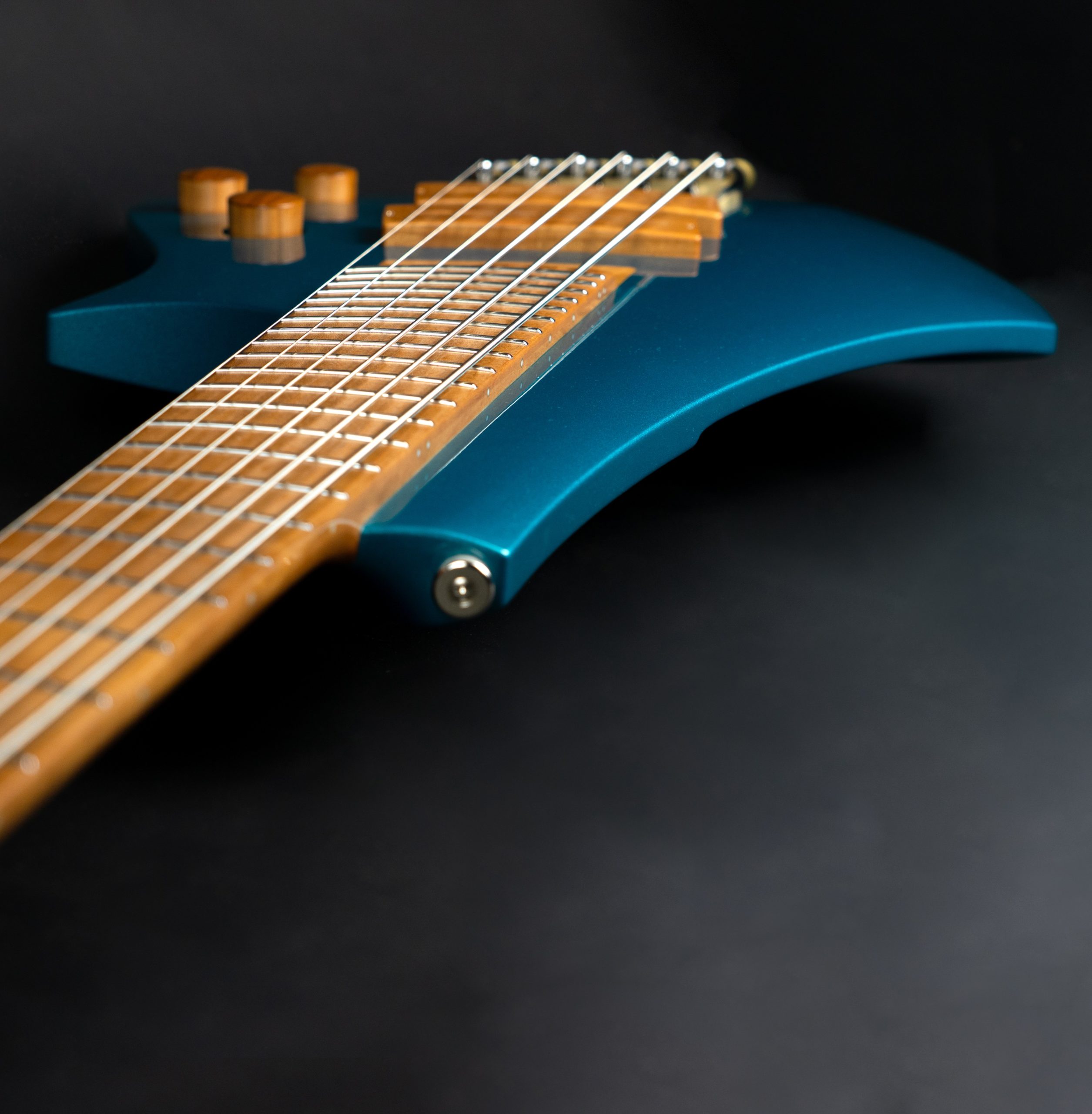
Body Carving
I put a lot of energy and research into the ergonomic aspects therefore the carves and shapes are not only aesthetic choices. They are primarily ergonomic choices that became aesthetic afterward.
The unique shape lets the instrument rest effortlessly whether you’re sitting with it on your right leg (casual position) or your left leg (classical position). The bass stays perfectly balanced without needing your hands to hold it up.
Whether sitting or standing, the deeply carved body fits the musician’s form. The rib cage contour, carved heel, and armrest are shaped to move with your body, providing comfort and freedom in every playing position.
Every model can be customized and carefully tailored to meet the artist’s individual needs, creating an instrument that feels like a true extension of the player.
